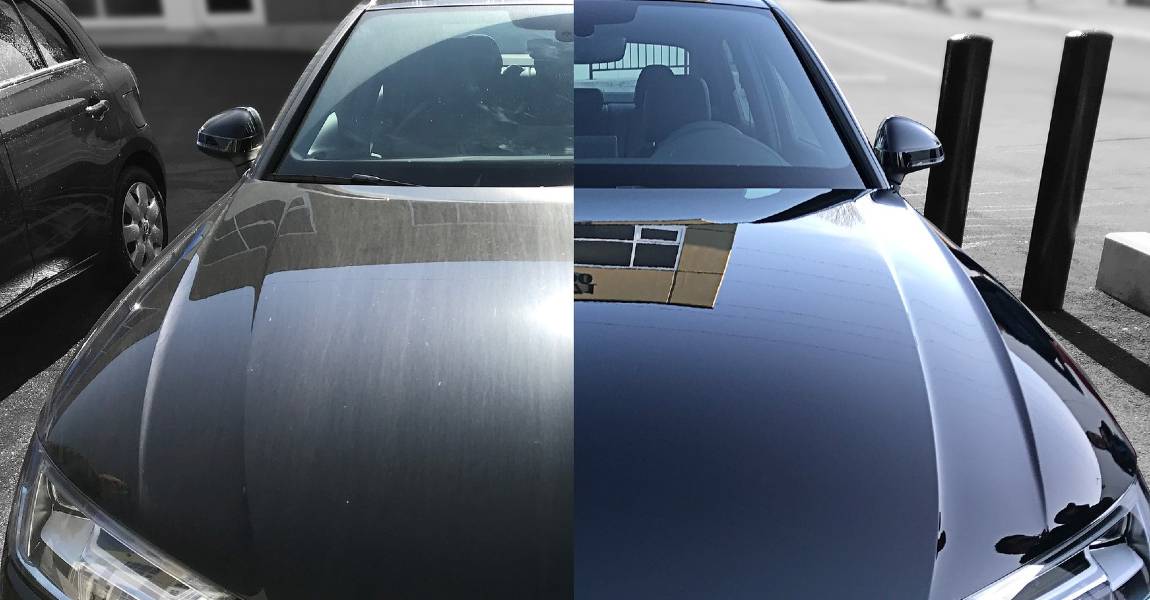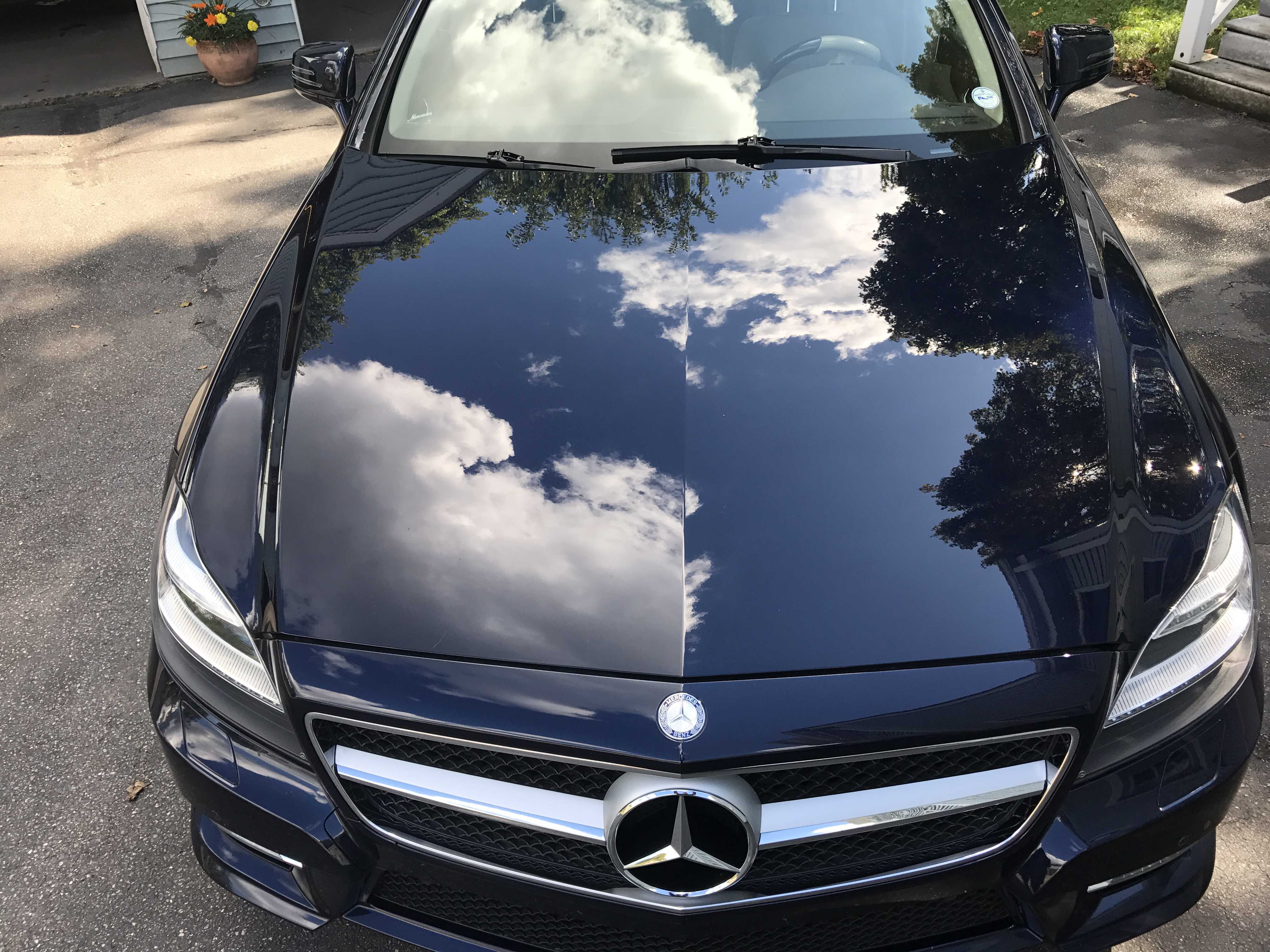The Importance of Ceramic Coating: Securing Your Auto's Exterior With Precision
In an era where preserving the useful and aesthetic stability of your vehicle is critical, ceramic finish becomes a critical option. This safety layer not just defend against environmental misfortunes however additionally elevates the visual appeal of your car. With its distinct bonding residential properties, ceramic layer provides a degree of security that much exceeds standard waxing approaches. Yet, how specifically does it achieve such impressive results? As we check out the subtleties of its application and contrast it to other choices, one can not question yet help about the specifics that make this technology crucial for modern vehicle treatment.
Advantages of Ceramic Coating
When it comes to protecting a car's aesthetic appeal, ceramic layer provides substantial advantages. By creating a semi-permanent bond with the lorry's paint, ceramic coverings successfully protect against oxidation and fading, guaranteeing that the auto keeps a glossy, showroom-like finish for a prolonged period.
In enhancement to its safety high qualities, ceramic layer supplies remarkable hydrophobic buildings, triggering water and various other fluids to grain off effortlessly. This function streamlines the cleansing process, as dust and debris are much less most likely to stick to the surface, minimizing the regularity and effort needed for maintenance. The coating's resistance to chemical spots from acidic pollutants like bird droppings and tree sap is an additional noteworthy benefit, minimizing potential paint damage.
Ceramic finishings additionally enhance scratch resistance, offering a layer that can absorb small abrasions and swirl marks. This quality is specifically useful in keeping a beautiful surface area, reducing the likelihood of noticeable flaws and protecting the integrity of the vehicle's paintwork over time.

How Ceramic Coating Functions
Comprehending the technicians behind ceramic covering exposes its efficiency as a safety option for cars. Ceramic finishings are basically liquid polymer applications that chemically bond with a car's manufacturing facility paint, creating a safety layer. This layer functions as a barrier versus environmental pollutants such as gunk, ultraviolet, and dirt rays, which can deteriorate an automobile's exterior gradually. The essential part in ceramic finish is silicon dioxide (SiO2), which stems from quartz crystals and is recognized for its outstanding hardness and sturdiness.
Application of ceramic finish includes a meticulous procedure. The lorry's surface area must be thoroughly cleaned up and decontaminated to make certain ideal adhesion. As soon as used, the liquid polymer forms a semi-permanent bond with the paint, hardening right into a transparent, resilient guard. This guard enhances the auto's gloss and hydrophobic residential properties, facilitating much easier cleaning by triggering water and impurities to grain and slide off easily.
Moreover, the layer's molecular framework gives resistance to minor scratches and chemical stains. Unlike waxes or sealants that sit on top of the paint, ceramic finishings integrate with the surface, using resilient defense. This combination is fundamental to its performance, making sure the vehicle's surface stays pristine for several years.
Contrasting Ceramic Coating to Alternatives
In the world of automobile protection, ceramic layer stands as a powerful choice when contrasted to standard alternatives such as sealers and waxes. While waxes provide a short-lived shiny finish, normally lasting just a couple of weeks to months, ceramic coverings provide a longer-lasting option, commonly withstanding for many years. This resilience is credited to the chemical bonding that occurs when ceramic finishes are applied, forming a solid layer that is resistant to environmental dangers.
Contrastingly, sealers, although more resilient than waxes, still fall short of the robust protection used by ceramic layers. Sealants can normally last for as much as a year, offering a synthetic shield versus specific elements. They do not have the superior hydrophobic properties and UV protection that ceramic layers supply.
In addition, ceramic finishes use improved scrape resistance, which neither waxes nor sealers can efficiently match. In recap, while typical waxes and click resources sealants use standard defense, ceramic finishes present a comprehensive, lasting option that considerably boosts and protects the car's outside finish.
Application Refine Discussed
Using ceramic covering to a lorry needs a meticulous process to make sure optimal outcomes and durability. The initial step involves completely cleansing the automobile's surface to remove dust, oil, and previous waxes. This is important for guaranteeing the finish adheres correctly. A pH-neutral shampoo and a clay bar therapy are usually made use of to accomplish a pristine surface. As soon as cleaned, the lorry is dried and polished to remove any flaws, as any existing swirls or scrapes can come to be more noticable after the layer web link is used.
Complying with surface preparation, the application of the ceramic finishing starts. The covering is commonly used in a climate-controlled setting to avoid dust particles from deciding on the newly cleaned surface area. Utilizing an applicator pad, the ceramic finishing is applied in small sections to guarantee even coverage. It is essential to follow the maker's guidelines pertaining to the ideal healing time and application density.
After application, the covering needs a specific curing duration, throughout which the automobile needs to be shielded from water and pollutants. This healing procedure can differ depending on the product yet typically ranges from 24 to two days. Eventually, this detailed procedure is critical in achieving a resistant and glossy finish.
Maintenance Tips for Durability
To keep the long life of a ceramic covering, adherence to a self-displined maintenance routine is crucial. Normal washing is vital; make use of a pH-neutral automobile shampoo and soft microfiber gloves to avoid abrasions. Prevent automated automobile cleans, as their harsh brushes can endanger the covering's honesty. Rather, decide for a hand wash to guarantee complete yet gentle cleansing.
Post-wash, drying the car with a tidy microfiber towel avoids water spots that might break down the basics layer with time. Additionally, use a ceramic finishing booster every couple of months. These boosters enhance the hydrophobic residential or commercial properties and boost the layer's safety capabilities, guaranteeing it stays efficient versus pollutants.
Maintain in mind that parking locations play an essential duty in maintenance. ceramic coating. Whenever possible, park in shaded areas to reduce UV exposure, which can progressively weaken the covering. For long-term storage space, consider utilizing a vehicle cover for added defense against environmental aspects
Verdict
Finally, ceramic covering serves as an essential protective layer for vehicle outsides, supplying durable protection against environmental variables such as crud, uv, and dirt rays. By forming a semi-permanent bond with the paint, it improves visual appeal while protecting the car's worth. Its hydrophobic residential properties facilitate easier upkeep, distinguishing it from alternative safety approaches. Comprehending the application process and adhering to maintenance suggestions are important for making the most of the long life and efficiency of ceramic finishing.
When it comes to maintaining a car's visual charm, ceramic finish uses substantial advantages. By forming a semi-permanent bond with the automobile's paint, ceramic coatings efficiently avoid oxidation and fading, ensuring that the auto maintains a glossy, showroom-like surface for an extended period. Ceramic coverings are basically fluid polymer applications that chemically bond with an automobile's factory paint, producing a safety layer. In summary, while traditional waxes and sealers supply basic protection, ceramic layers present a thorough, lasting service that dramatically maintains the automobile and enhances's outside coating.
